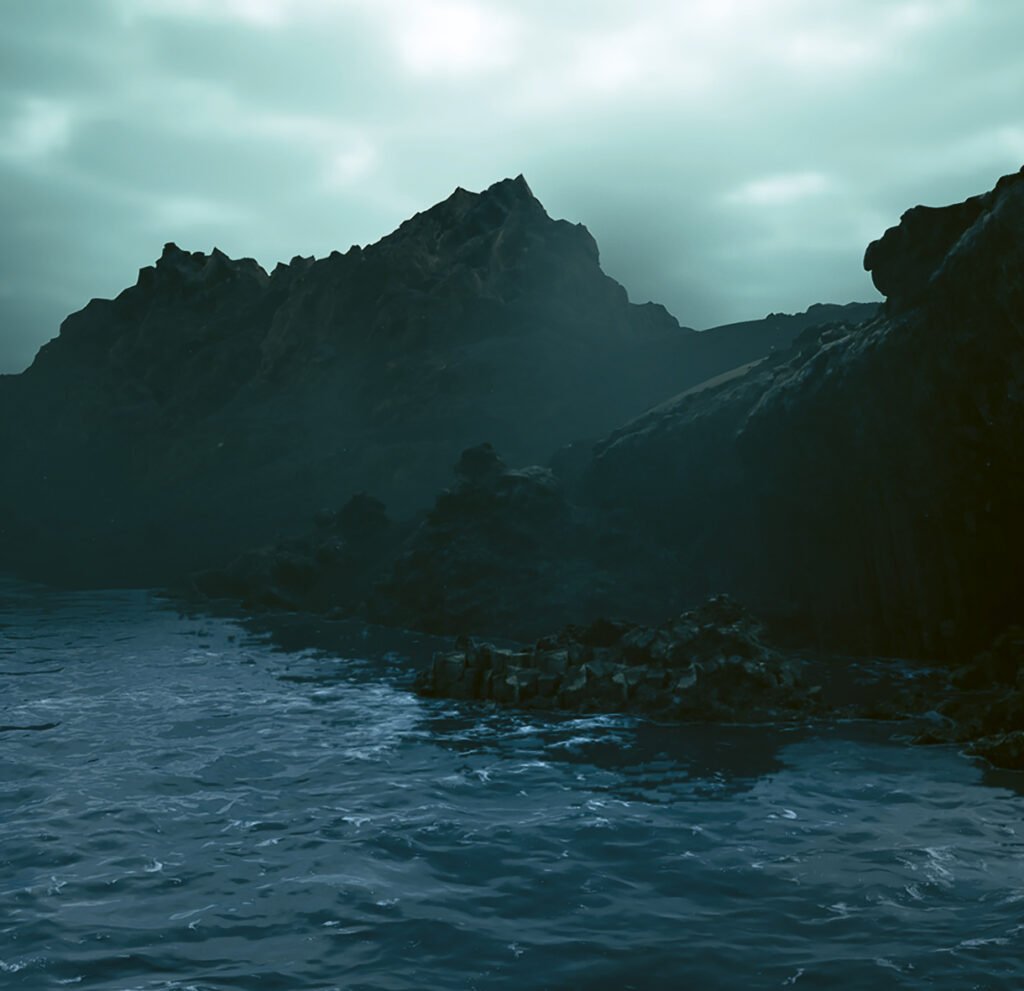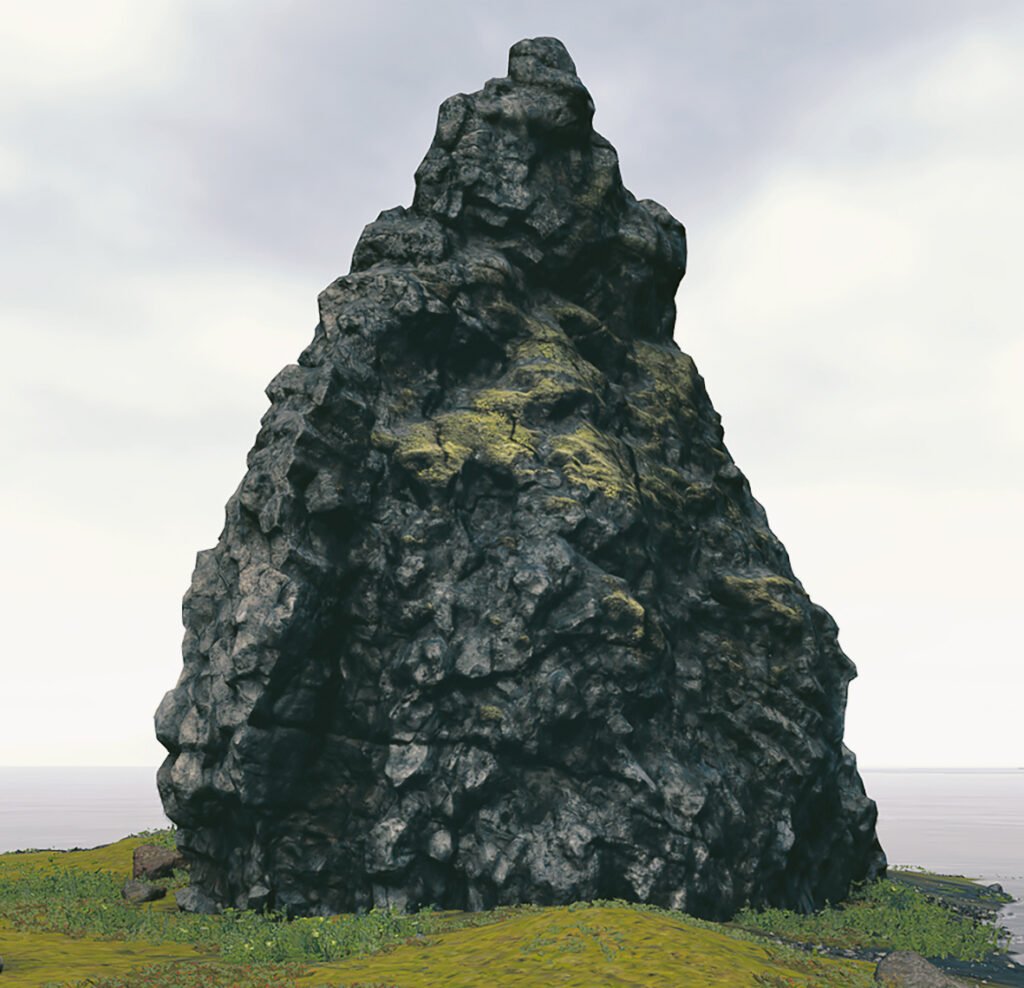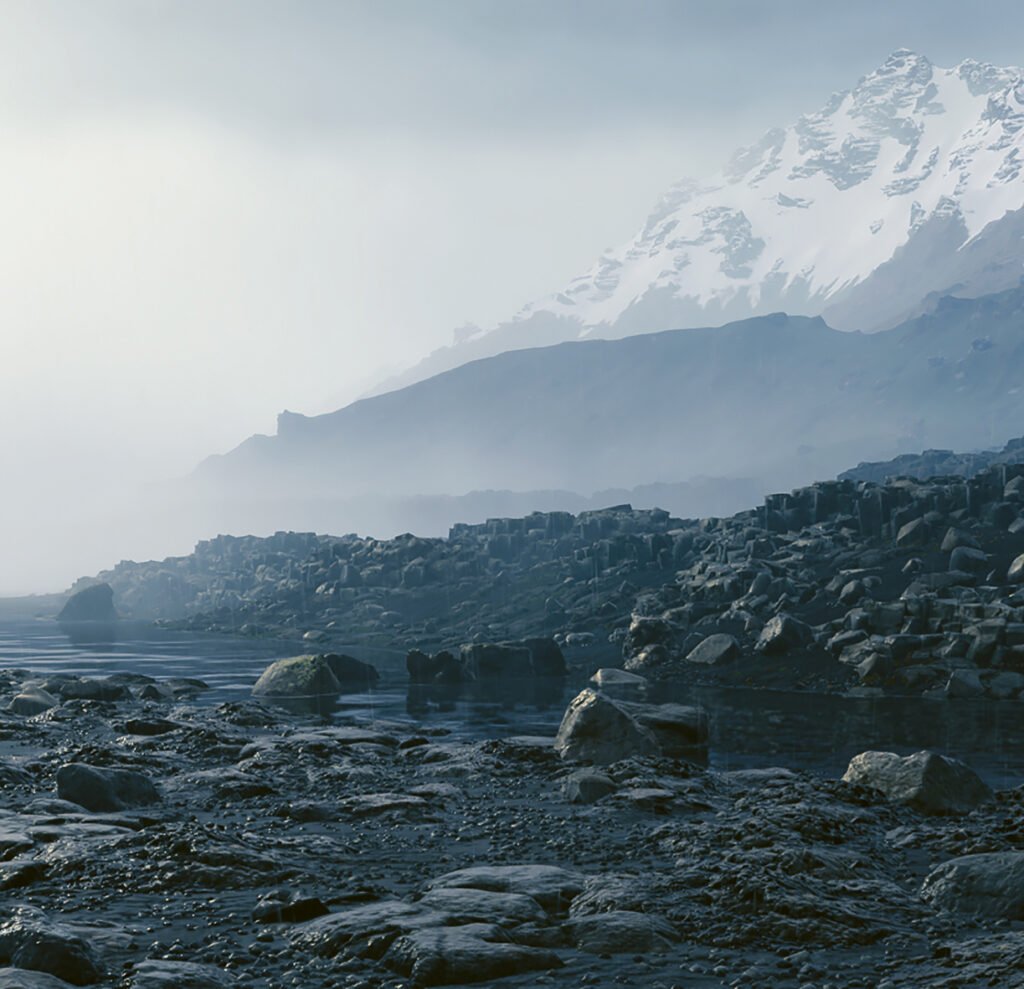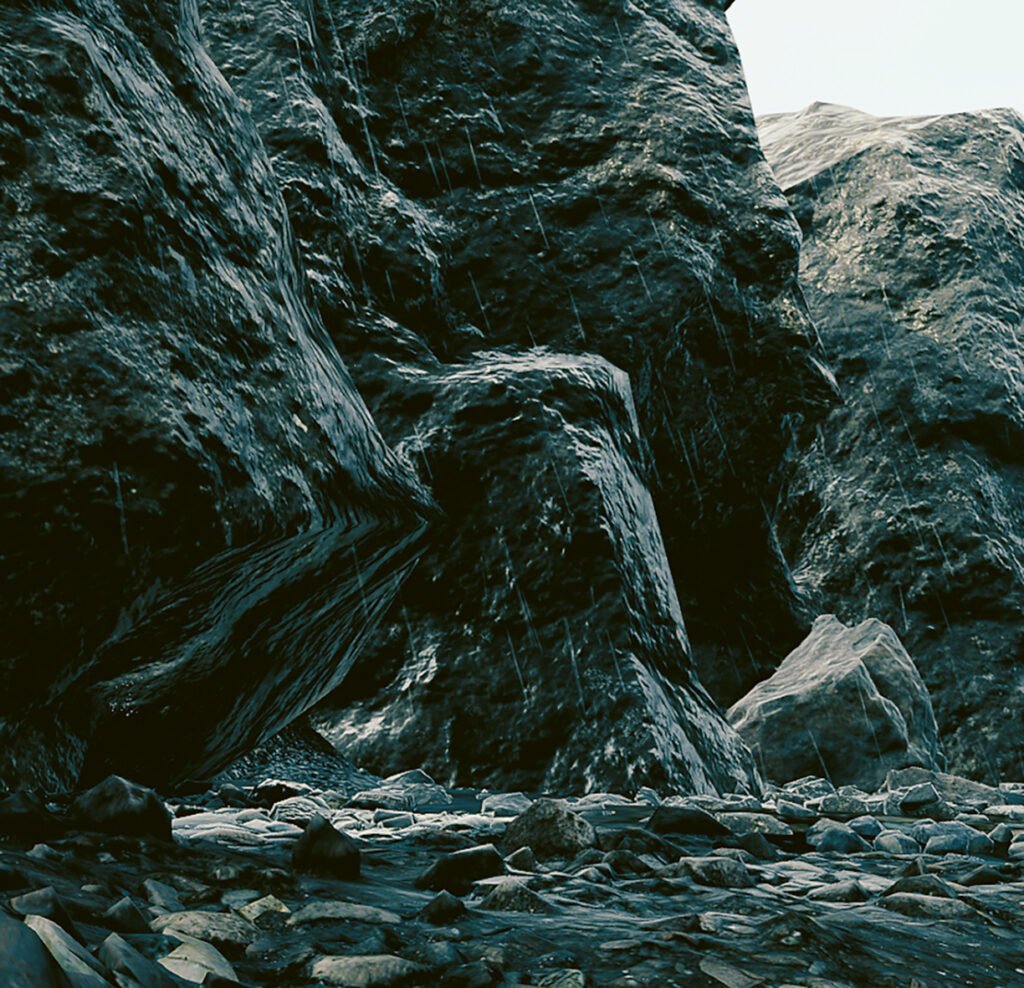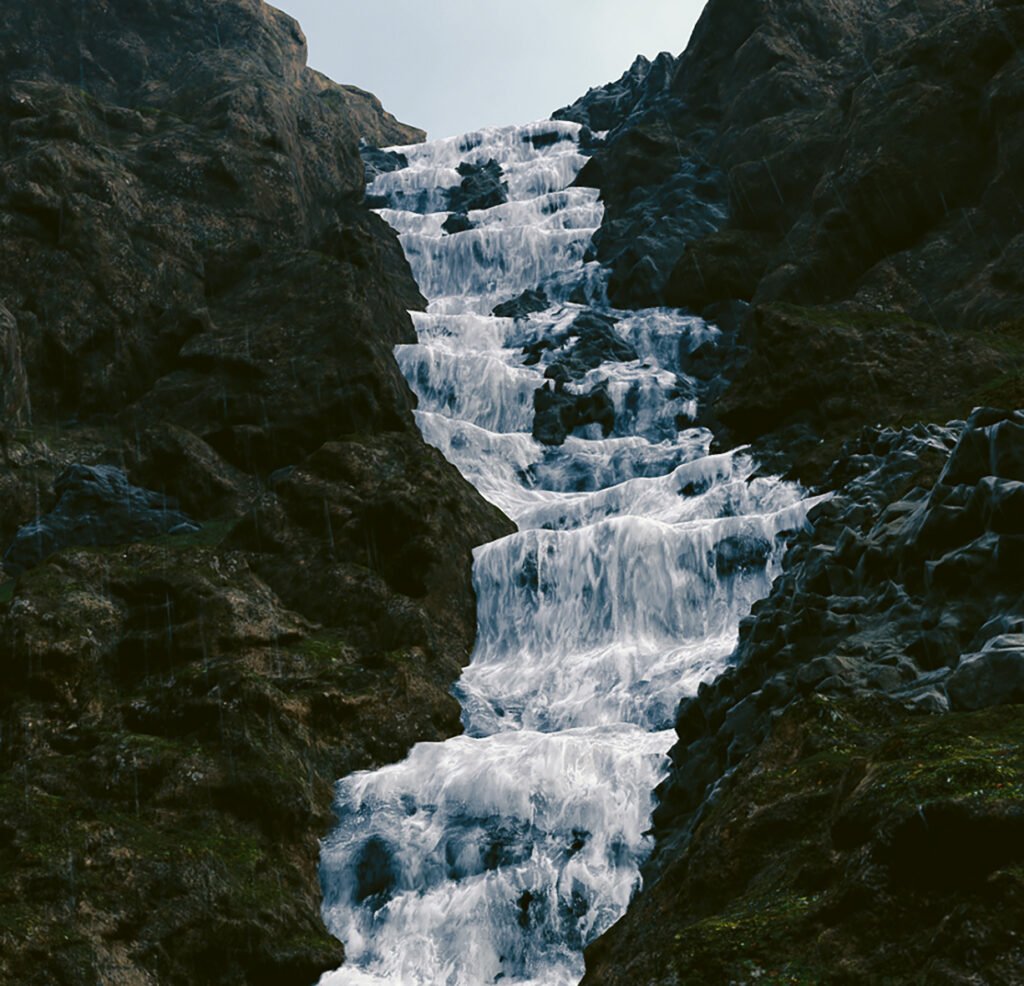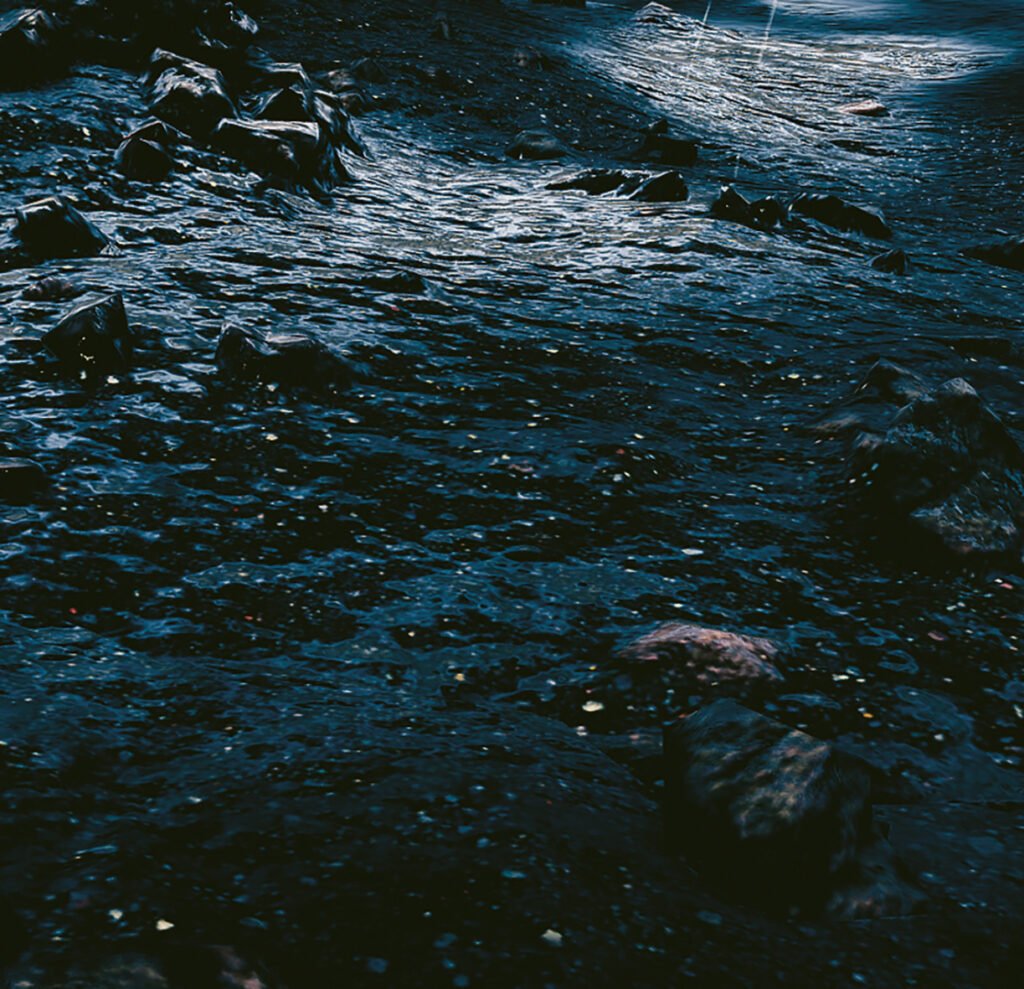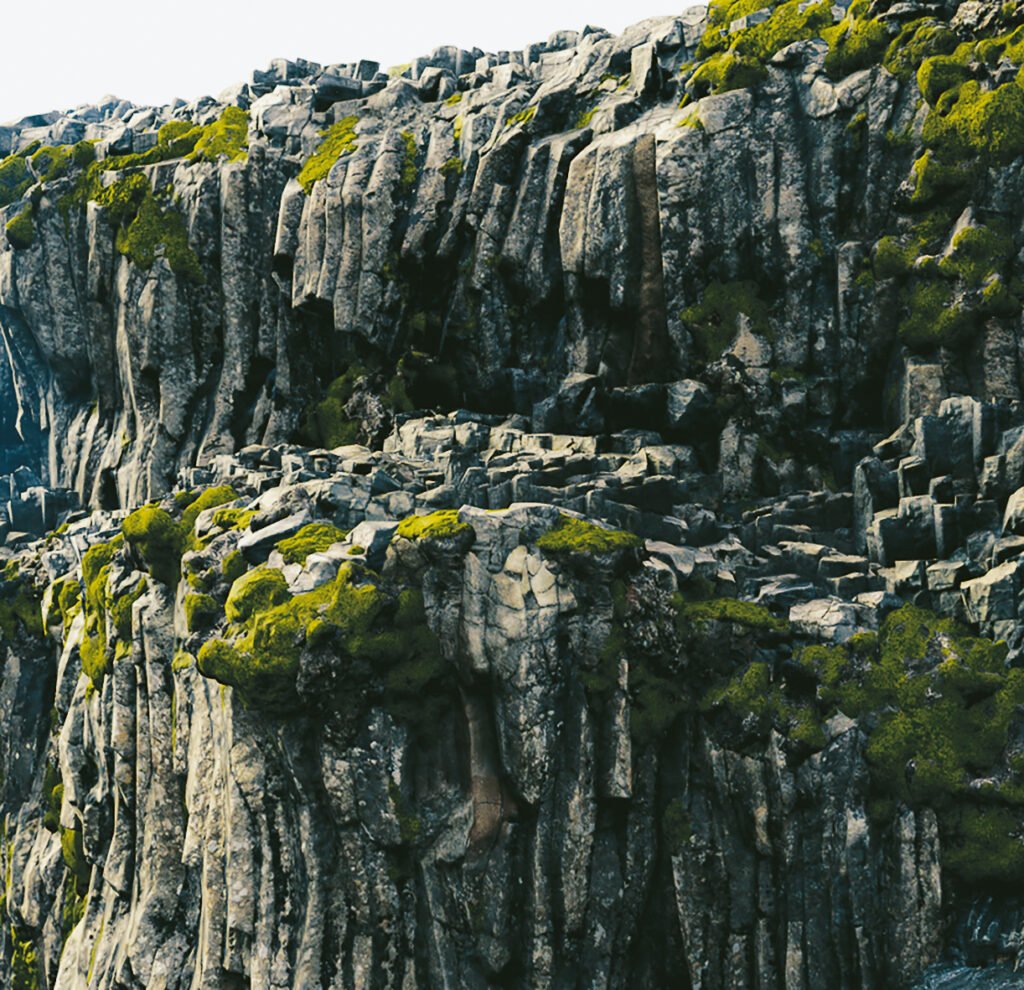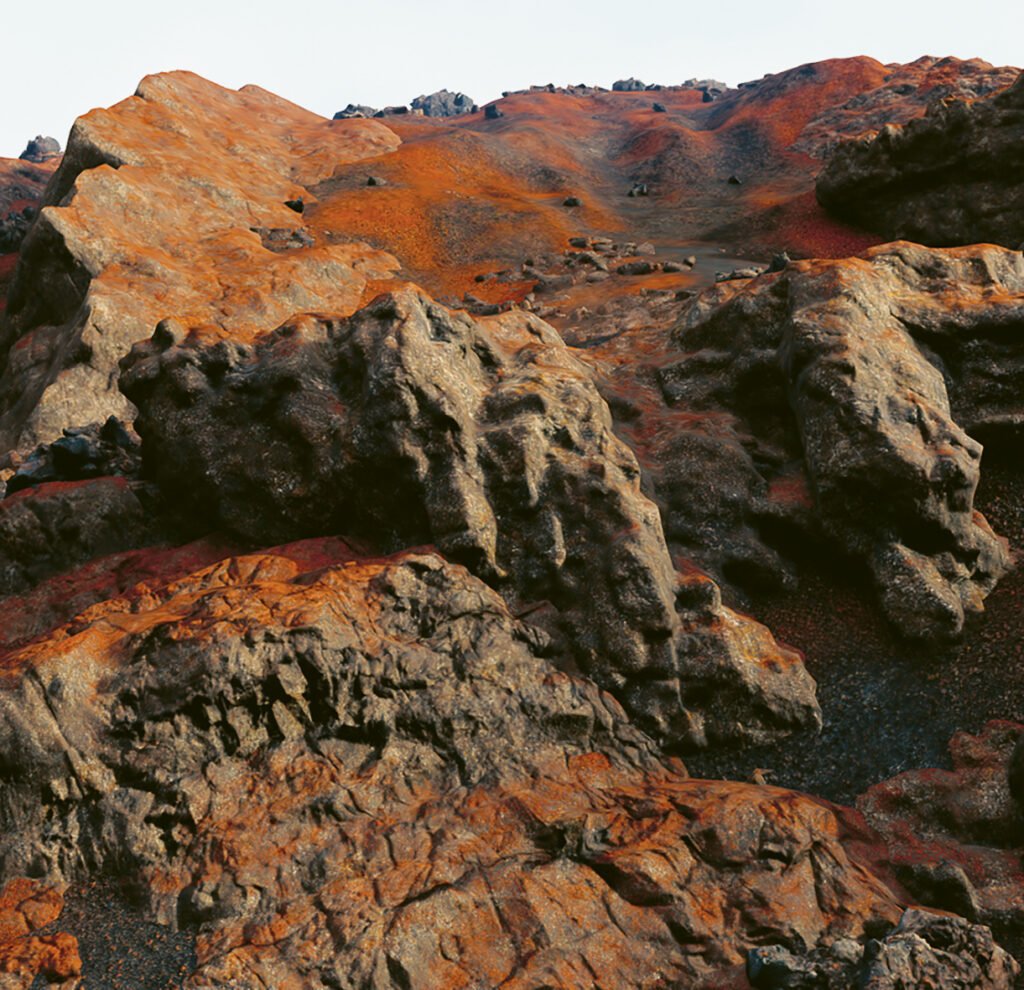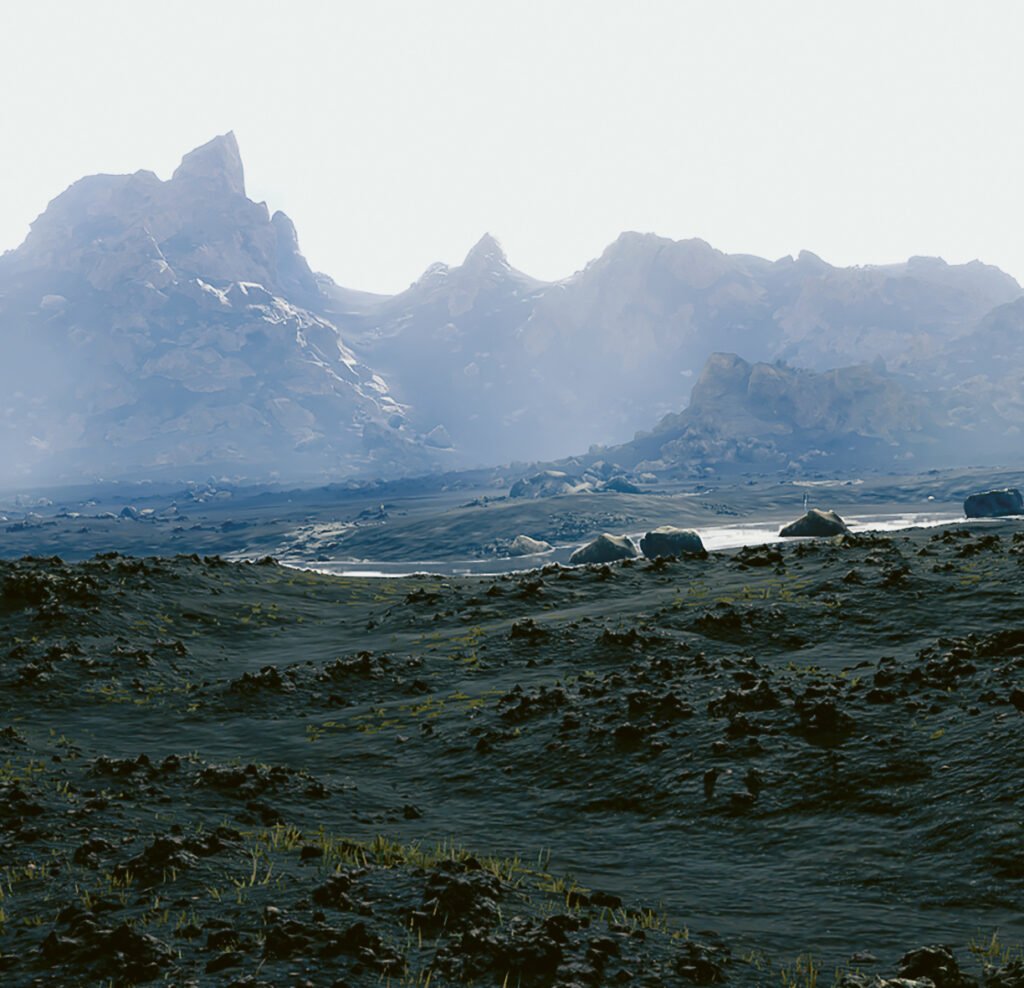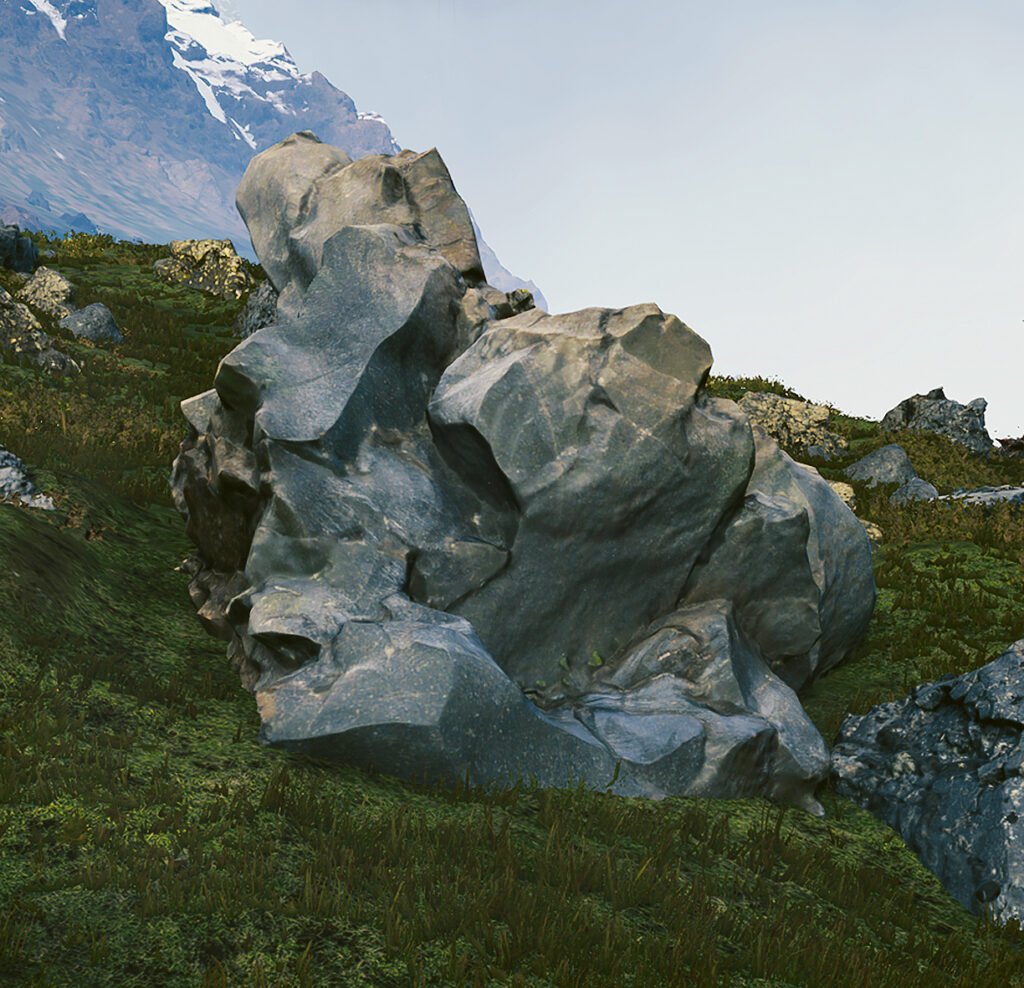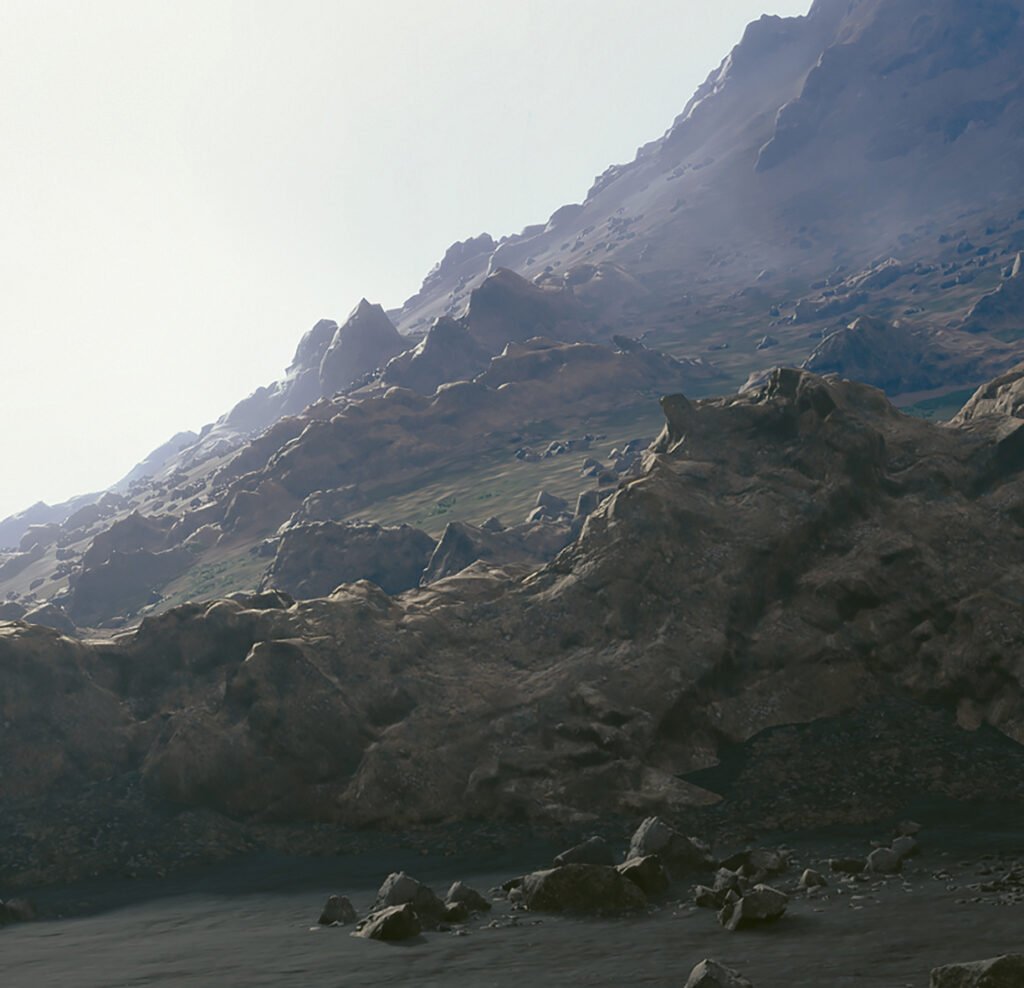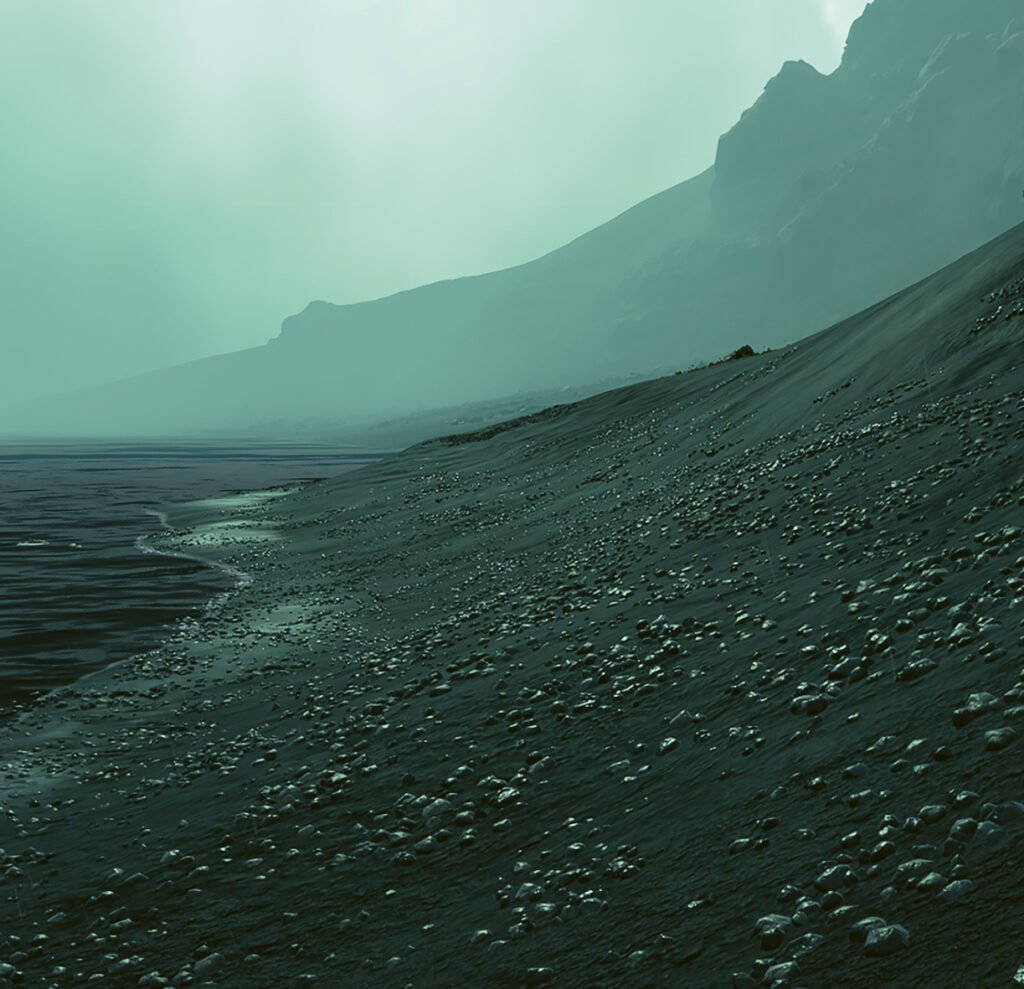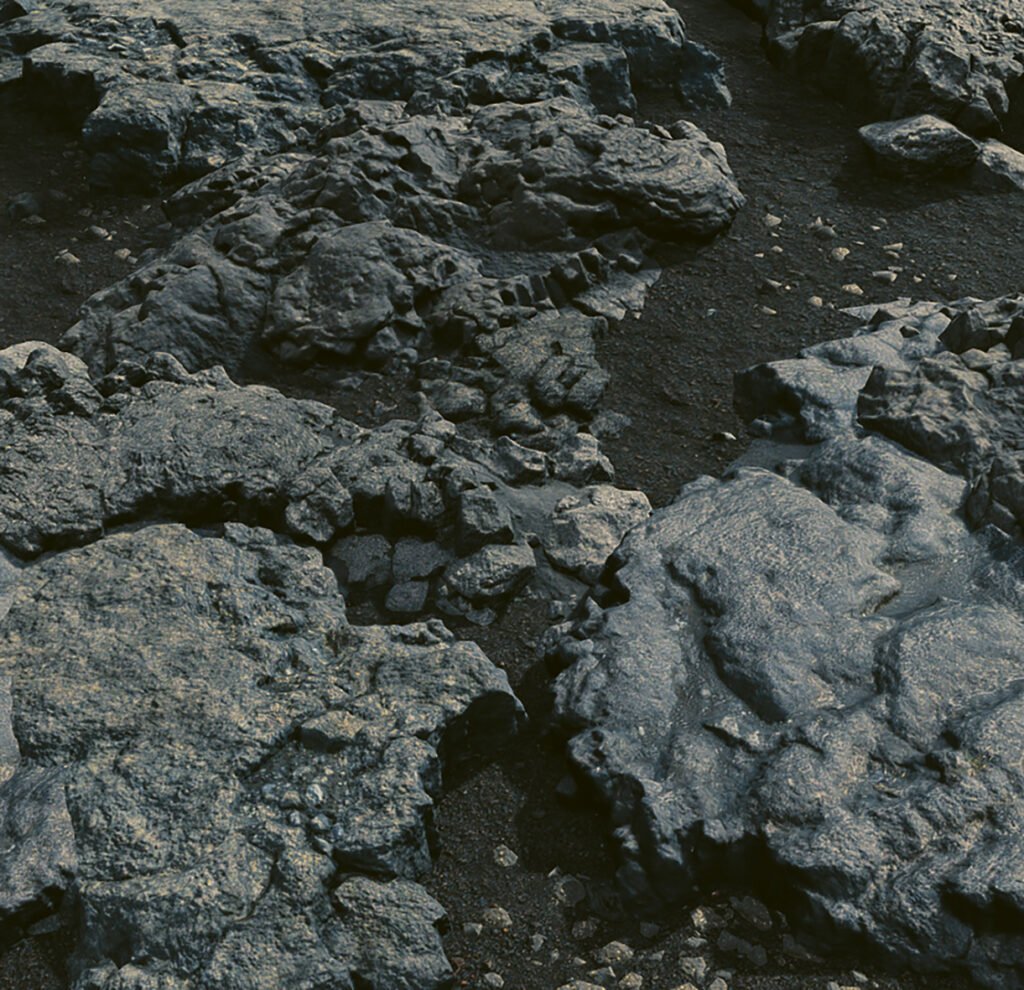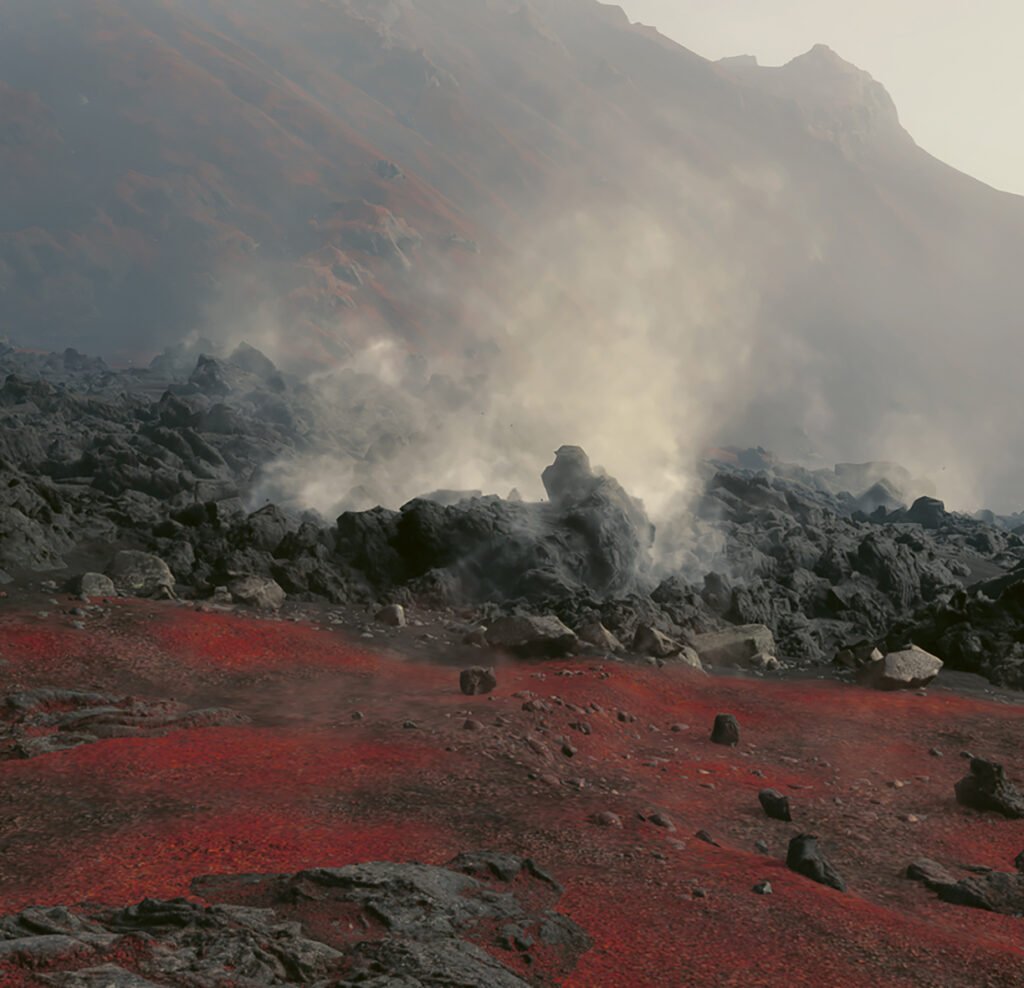In the continuation of his 2013 project No Cliché, published by Jane & Jeremy, which aimed at conveying an unusual imagery of much-photographed Iceland, Greco had decided on January 2020 to further portray the island. But as the pandemic cut short any perspectives of travelling back, Greco set on a different journey by discovering the game Death Stranding, in buying a Sony PS4 at the begining of the lockdown, and its landscapes evocative of a mystical and fantasized Iceland and he started taking pictures in the game, as if I was in Iceland at the same time. This unexpected turn of events gave a new dimension to the project.
Using the game and its constraints as a playground for experimentation, Greco undertook a meticulous yet playful photographic process, translating his approach to photography to the making of digital, virtual images.
But where No Cliché goes against the dominant imagery emanating from the island, Place(s) embraces its codes and plays with the ambiguity of an anonymous landscape made familiar. As digital images, they question both in-game and traditional photography by setting a point where the two meet and intertwine. It questions also about a very interesting subjects: what is real, what we consider as not real, what does it mean to make a photographic project in the Meta, what is photography today.
This project and the book Place(s) contribute to make in-game photography better known, which lacks recognition, because it continues to be somewhat snubbed by a majority of the academic and museum worlds who are reluctant in the face of this “new” form of photography… which has already around 25 years with screen shots on PC. The main reason being that is these academic bodies and these curators, mainly men and a bit old, do not consider video games as art, but rather as a sub pop culture. Greco, as a gamer since almost 30 years, observe that since a long time. The video game is still stigmatized and relegated to the sphere of youth entertainment and the potential that many of talented artists manage to grasp, exploit and show, is not (yet) understood. But fortunately, a few young and talented curators, with real vision and openness, like Danaé Panchaud, Sarah Girard and Marco De Mutiis are changing things and breaking rules.
Pascal Greco (1978) is an italo-swiss self-taught filmmaker and photographer. His photographic work focuses on architecture and its places in the landscape. His two previously published works result from a 8 year-long exploration of Hong Kong: its atypical and unique architecture Hong Kong – Perspectives, Prospectives, Typologies (Infolio 2018) and its iconic neon signs Hong Kong Neon (Infolio 2021) which were notably featured in The Guardian, Vice, Monocle, Fast Company, GUP, Bloomberg CityLab, Polka, Fisheye and CNN.
Between 2018 and 2020, Pascal Greco has presented in several festivals and theaters his film SHADOW with Asia Argento. This magnetic, intense and hypnotic film, that he directed with Philippe Pellaud, is now released in free access since March 27, 2022, on Vimeo.
Now Greco is finishing is first feature length documentary called The Scavengers about the elderly, in Hong Kong, with insufficient or no retirement to cover their basic needs and expenses, and who, to meet their needs, collect all day long, paper, cardboard or sagex, to resell them by the kilo at a ridiculous price. A first version of the film was presented in the FIFDH | International Film Festival and Forum on Human Rights, in Geneva in 2019.
Greco has also worked for 5 years with young people in a situation of social exclusion, helping them to create, write, play, direct and edit short films. And also teach them and work with them on commercial videos for clients.

